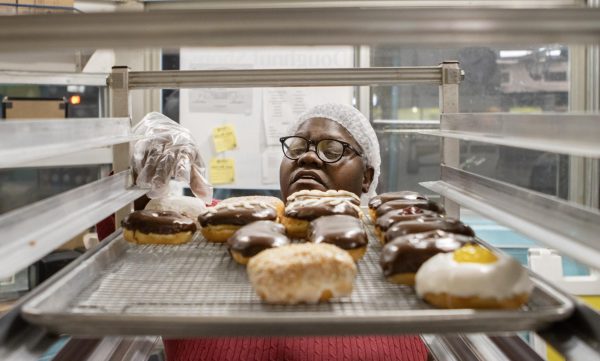Working to find a personal style
When it comes to decorating an apartment or residence hall room, one might be surprised how the colors and memorabilia one chooses to enrich living space can effect how large or small the space appears.
By using specific colors, students can actually creatively enhance their rooms while simultaneously creating an illusion that their rooms are more expansive than the measurements would otherwise indicate.
Jill Sherman, an interior designer for Georgia-based Collaborative Design, said students should choose color shades for their living spaces that not only suit their tastes but also ones have aesthetic benefits.
Sherman, who decorates homes in affluent neighborhoods in places such as Alpharetto, Ga. and other upscale Atlanta areas, said soft tones such as buttery yellow and mild gold will make one’s living space look bigger.
“Eyes remember colors more than anything else,” she said.
Students who prefer studying in their residence hall or apartment rooms will want to steer clear of vibrant colors when deciding which colors to deck their walls with or purchase bedspreads in since fluorescent or bright colors are notoriously distracting, Sherman said.
However, high-energy people will ultimately be more satisfied taking personality into consideration and sticking with more vibrant colors.
“If you are a hyper person, it would be better to (decorate) in blue and shades of green,” she said. “If you are a low energy person, you could paint your room red.”
No matter what color students choose to personalize their living space, their best bet is refraining from displaying the interior space of their residence with multiple, unrelated color mixes. Instead, students should focus on using one color and then sprinkling different color tones derived from that specific color to add variety to their living space.
“The more you keep one color going, the bigger the space will look,” Sherman said. “If I were doing my room I would do it monochromatic. Different shades of one color would make it look one color and more comfortable. A textured bedspread would also keep the interest level.”
Splashing the walls with too many posters will make rooms look smaller, she said.
Valerie Peters, a junior elementary education major, suggested going to poster sales and simply browsing without having a preconceived idea of what poster you intend to buy.
Calendars with bright colors also add flavor to dorm walls, she said. Bud Light bulbs, which can be purchased at Charleston’s Gateway Liquors, also are an excellent way students can enlighten living spaces, Peters said.
Since space is typically at a premium whether students live in an apartment or a residence hall room, Sherman suggested taking advantage of every nook and cranny one has.
“In a dorm room, you want to use more vertical space than horizontal space,” she said. “You want to build up instead of building out.”
Sherman said students consolidate room space by elevating their beds to the point where they can comfortably slide a desk underneath.
“You want to keep as organized as possible so that you are using as much wall space as floor space,” Sherman said.
Students can even enliven bland beige walls that anchor dorm rooms and apartments with a wall of shame, which is often times created by the occupants of residences, said Kristen Bensen, a junior speech communication major. A typical wall of shame consists of photos of ridiculous things roommates did that week, she said.
Bensen said lodging beer bottle caps into the ceilings in residence hall rooms also is a fun, harmless way to decorate living spaces.
Theresa Kronenberger, a junior elementary education major, used her art skills to design a mural that covers the “blahness” of her dorm room’s closet door.
“There are tons of options; you just have to be creative,” she said.












































